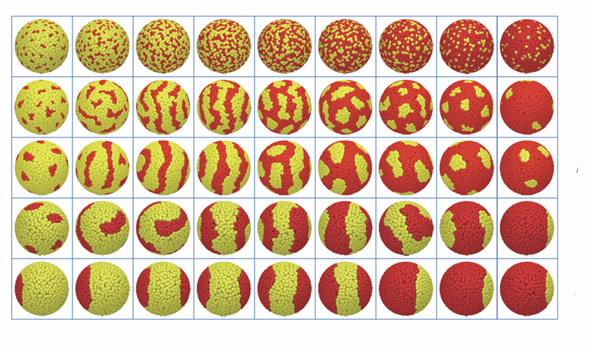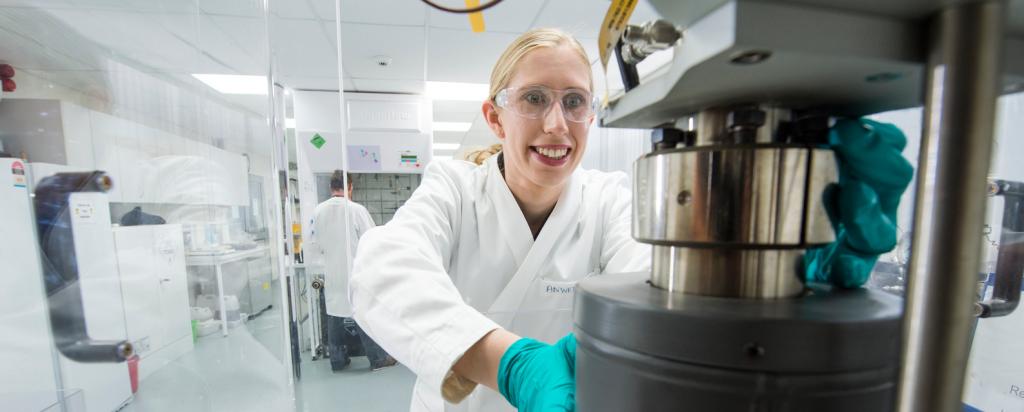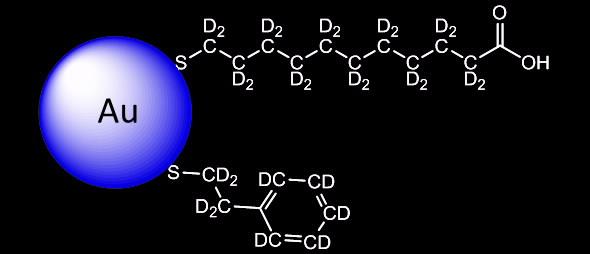

Published on the 10th April 2018 by ANSTO Staff
A large collaboration led by scientists from École Polytechnique Fédérale de Lausanne (EPFL) in Switzerland has used a powerful new approach to overcome the challenging task of characterising the structure of self-assembling organic molecules on the surface of nanoparticles.
Self-assembled monolayer-protected nanoparticles are being increasingly used in electronics, drug delivery, catalysis and sensing devices.
The composition and structure of the ligands that make up the shell layer is important because they are thought to determine the properties of the nanoparticles, such as the chemical, biological and interfacial behaviour.
Tuning ligand molecules allows for the nanoparticles to be tailor made for specific applications.

|
The research undertaken in collaboration with the University of Trieste, École Polytechnique Fédérale de Lausanne,, Paul Scherer Institute, Jülich Centre for Neutron Science, Adolphe Merkle Institute, and European Molecular Biology Laboratory has been published today in Nature Communications.
Lead author Zhi Luo is a PhD student in the Supramolecular Nanomaterials and Interfaces Laboratory at EPFL under Head Prof Francesco Stellaci.
Chemical deuteration at ANSTO’s National Deuteration Facility (NDF) was combined with small angle neutron scattering (SANS) and molecular simulations for the first time to create three dimensional models of the nanoparticles including gold, silver and copper.

The study shows that quantitative description of the morphology of the self-assembly on nanoparticles can be obtained by using small-angle neutron scattering (SANS) and deuterated organic molecules.
This approach is able to distinguish very similar structures and the methodology used is versatile for nanoparticles with different type of core elements as well as ligand chemistry.
Drs Tamim Darwish and Anwen Krause-Heuer (pictured below right), who deuterated a number of ligands for this study, were among the authors of the paper.
Although SANS had been used as a technique to study the density and thickness of the ligand shell, it is believed to be the first time that deuteration, a highly useful characterisation technique, was combined with SANS to decipher the complex morphology and length scales of ligands on the nanoparticles.
The authors report that the precision and qualitative nature of the approach exceeds other methods.
A technique, known as contrast matching, enables specific parts of a system to be probed using scattered neutrons.
“You can make different parts of the molecule visible or invisible depending on the presence of hydrogen or deuterium,” said Darwish.
Preliminary investigations using SANS were undertaken on the Quokka instrument by lead author, Zhi Luo at the Australian Centre for Neutron Scattering.
Importantly, deuteration appeared to have minimum effect on the size and composition of the nanoparticles.
While the investigation was undertaken on gold, silver and copper nanoparticles, the authors suggest it can be used more generally to characterise nanoparticles with different morphologies, core elements and ligand chemistry.
The authors report that features from patchy, Janus to complicated patchy-stripe like structures can be distinguished quantitatively with high sensitivity, and it is believed that this technique could become a general tool in nanoparticle research.
The NDF at ANSTO is a world- leading facility for chemical and biological deuteration, which is partly supported by the National Collaborative Research Infrastructure Strategy – an initiative of the Australian Government”
DOI: https://www.nature.com/articles/s41467-018-03699-7